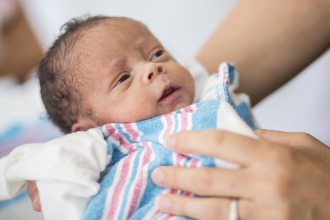
To swaddle or not to swaddle. The reasoning behind the age-old practice of swaddling. Swaddling is the term used for snugly wrapping a baby in a blanket for warmth and security. It’s a comforting practice that will actually keep your baby from being disturbed by their own startle reflex, and it can help keep them warm and secure for the first few days of life until their internal thermostat kicks in.
“A new baby is like the beginning of all things wonder, hope, a dream of possibilities.”
You will likely find that you will not leave the hospital without a swaddling lesson. Try it, after you’ve made sure your baby isn’t hungry, wet, or tired. Swaddling can be used to help settle your baby down and calm them when overstimulated or when there is a need for the familiar tightness and security of the womb.
If you have concerns, you can consult with your pediatrician, but most new moms find that swaddling ushers in a welcome calm and soothes their baby into a relaxing sleep.
It’s Important to Swaddle Correctly

Be certain you know how to do it correctly. Babies have soft cartilage and their hip sockets could become damaged if they are wrapped too tight and it could lead to hip dysplasia.
Developmental hip dysplasia is somewhat common in newborns. Your doctor will screen your baby at birth and during their pediatric visits. The factors that will put your baby at greater risk for hip dysplasia are your family history, breech delivery, and being a girl.
To avoid a problem when you swaddle, be sure there’s enough room at the bottom of the blanket so that your baby can bend their legs up and out from their body.
Once your baby is about a month old you may want to stop swaddling while they are awake so it does not interfere with their mobility and development. Although you may wish to swaddle your baby for naps and nighttime if it helps with sleeping. At two months, the American Academy of Pediatrics recommends you stop swaddling before the new phase of rolling over.

